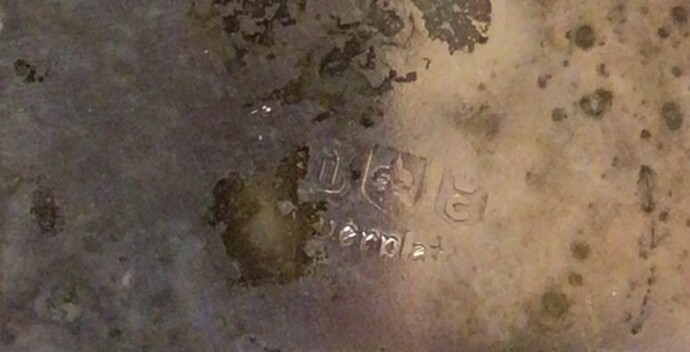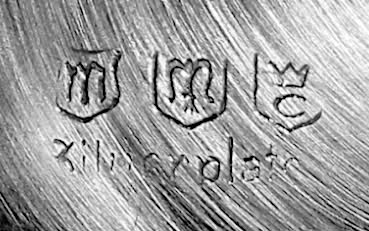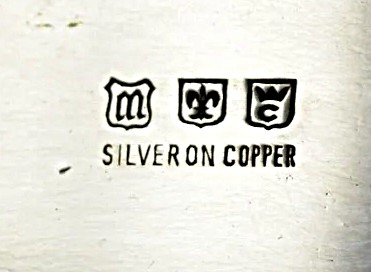Did not realize silverplate could have hallmarks. Any help on deciphering these would be appreciated…
Silverplate does not have “hallmarks.” Hallmarks, by definition, need a “hall,” i.e., a guild of some sort that assays the pieces and guarantees their silver purity.
Silverplate has “maker’s marks,” things applied by the makers at their whim. They often resemble real hallmarks, solely as a way to make buyers think they’re getting something more special than the pieces really are. There are no controls over these types of marks, other than some prohibitions against copying real hallmarks. For example, after 1896 it was illegal in the U.K. to use a crown mark unless the piece was truly assayed as sterling by the Sheffield assay office.
I believe the marks on your piece were used by Meneses Orfebres of Madrid, Spain. Here’s a photo grabbed from long-ago thread in another forum:
Date uncertain, and of purely decorative value.
Although this mark has been attributed to Meneses Orfebres on many occasions it is now thought to be by Eton Silver of Glendale, NY. This attribution also neatly sidesteps the potential problem of English language on a Spanish piece. See https://www.925-1000.com/forum/viewtopic.php?p=202847.
Phil
I did wonder about that. Seeing English on a piece from the Spanish-speaking countries in the New World wouldn’t be overly surprising, but seeing it on something from Old World Spain would be quite odd.
There’s one piece out there on eBay right now that not only ID’s the maker as Meneses Orfebres, but confidently proclaims it to be 19th Century. Eton, apparently, was active in the 1960’s and 1970’s. This illustrates the danger of relying on postings by sellers who are even more clueless than we are. ![]()
Exactly what I needed to know! Thanks…
Thanks-I think you are right!


